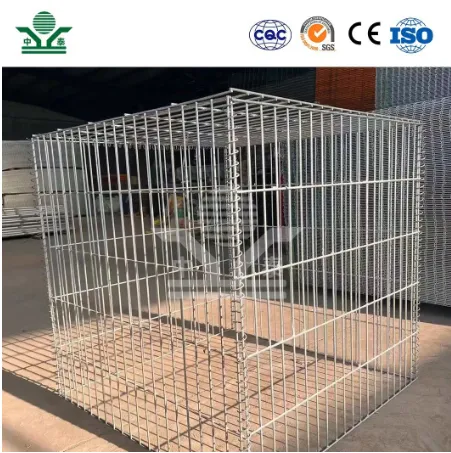Types of Noise Barriers An Overview
Noise pollution has become a pressing issue in urban areas, affecting the quality of life for residents and disrupting natural habitats. To mitigate these effects, various types of noise barriers have been developed and implemented. These structures serve as effective solutions to reduce noise emitted from highways, railways, and industrial zones. In this article, we will explore the different types of noise barriers, their materials, designs, and applications.
1. Concrete Noise Barriers
Concrete noise barriers are among the most commonly used types due to their durability and effectiveness. Made from precast concrete panels or poured in place, these barriers offer significant sound attenuation. Their heavy mass absorbs and deflects sound waves, making them ideal for locations near highways and busy streets. Concrete barriers can also be designed to blend with the surrounding environment, incorporating aesthetic elements such as murals or patterns.
2. Earth Mounds (Berms)
Earth mounds, or berms, are natural barriers created by piling earth to create a raised structure. These barriers can be an effective and eco-friendly solution for noise reduction. They not only decrease noise levels but also enhance green spaces, providing habitats for wildlife and promoting biodiversity. Berms can be planted with vegetation, which further aids in absorbing sound and offers aesthetic benefits.
Acoustic fences are a lightweight alternative to traditional barriers, made from materials like wood, vinyl, or composite materials. These fences are designed specifically to minimize sound transmission. While not as effective as concrete or earth mounds, they are suitable for residential areas where aesthetic considerations are important. Acoustic fences can be integrated into landscaping plans and often feature decorative elements that enhance their visual appeal.
types of noise barriers

4. Transparent Noise Barriers
Transparent noise barriers, made from materials such as acrylic or polycarbonate, are increasingly popular in urban environments. Their primary advantage is that they reduce noise without obstructing sightlines. This is particularly beneficial in scenic areas or where views are a priority, such as along highways or in parks. Although their sound attenuation capabilities may not match those of solid barriers, their aesthetic value makes them a preferred option in many contexts.
5. Vegetated Barriers
Vegetated barriers combine the benefits of sound insulation and aesthetic appeal. These barriers involve a dense planting of trees and shrubs that can absorb and reflect sound waves. While they often take longer to establish and require ongoing maintenance, vegetated barriers contribute to the environment by improving air quality and providing habitats for wildlife. They are particularly effective in residential neighborhoods, where they can enhance privacy and create a more pleasant atmosphere.
6. Modular Noise Barriers
Modular noise barriers are prefabricated systems that can be adjusted and customized according to specific requirements. These systems often blend various materials, including concrete, metal, and sound-absorbing panels, to meet specific noise reduction needs while allowing for quick installation. Modular barriers can be particularly advantageous in temporary situations, such as construction sites, where noise reduction is necessary only for a limited time.
Conclusion
Noise barriers play a crucial role in urban planning and development by providing solutions to mitigate noise pollution. The choice of barrier depends on several factors, including the specific noise source, location, environmental impact, and aesthetic considerations. From robust concrete barriers to eco-friendly earth mounds and innovative transparent designs, the variety of noise barriers available today allows for tailored solutions that meet the diverse needs of communities. As awareness of noise pollution continues to grow, the development and implementation of effective noise barriers will remain an essential aspect of creating livable and harmonious urban environments.
-
Why Galvanized Trench Cover Steel Grating Resists Corrosion
NewsJul.10,2025
-
The Versatility and Strength of Stainless Expanded Metal Mesh
NewsJul.10,2025
-
Load Calculations in Steel Grating Platforms
NewsJul.10,2025
-
Keeping Pets and Kids Safe with Chicken Wire Deck Railing
NewsJul.10,2025
-
Hole Diameter and Pitch for Round Perforated Metal Sheets
NewsJul.10,2025
-
Aluminium Diamond Mesh in Modern Architecture
NewsJul.10,2025
Subscribe now!
Stay up to date with the latest on Fry Steeland industry news.

